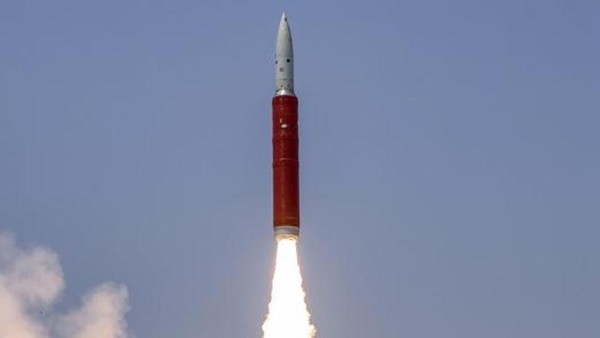It’s time to speak out about India’s reckless anti-satellite testby Jessica West
|
| According to the Indian government, the test makes India a “space power.” But India was already a rising space power. This test was simply reckless. |
Details of the event are still being uncovered, but it is reported that a BMD missile interceptor developed by the Indian Defence Research and Development Organisation was launched from the Abdul Kalam Island launch complex. It then intercepted an Indian satellite, Microsat-R, at an altitude of roughly 300 kilometers. India’s Ministry of External Affairs claimed, “The test was fully successful and achieved all parameters as per plans.” According to the Indian government, the test makes India a “space power.”
But India was already a rising space power. This test was simply reckless. India’s regional rivalry with China, itself a space power, is a key driver for its actions—a situation also plays well with domestic audiences. But the consequences are global.
The first concern that immediately comes to mind is the production of space debris, which poses a hazard to all other spacecraft in the proximity of the strike. India claims that it took a responsible approach to the production of debris. Because the strike was at the relatively low altitude of 300 kilometers, nearly all of the resulting debris should re-enter Earth’s atmosphere within a few weeks.
While this is a better outcome than the massive cloud created by China in 2007—which continues to pose a threat in space—it is by no means satisfactory. We don’t know yet exactly how much debris was produced and exactly how widely distributed it will be. But even if short-lived, some debris poses a threat, particularly to the International Space Station.
Further, this test breaks the taboo against kinetic intercepts that has existed since the Chinese and US demonstrations more than a decade ago. There are other ways that India could have demonstrated such a weapons prowess without creating debris. China, for example, is known to have performed a number of flyby tests in recent years. While less spectacular than blowing a satellite out of the sky, such testing is certainly safer. But even so, such demonstrations remain aggressive.
| But beyond ruminations about the dangers of debris, the international community of states has been silent. Such silence leaves all of us less safe. |
The fallout from India’s ASAT is more than debris. India’s test adds fuel to what is already a simmering arms race in outer space and exacerbates growing military tensions. Although India claims that the test was conducted to safeguard its assets in space, ASAT weapons are inherently offensive. The sense of aggressiveness is heightened by the fact that the test was conducted with no warning to the international community.
Such a destructive capability does little to enhance national security in space. Instead, the best way to preserve a global commons with a fragile natural and strategic environment is to support common security through rules and restrictions on weapons and dangerous behavior.
Seen from this angle, India’s test was also diplomatically reckless. A group of governmental experts representing more than 25 states recently concluded talks in Geneva that explore options for advancing additional measures to prevent an arms race, and armed conflict, in outer space (PAROS). So far, this challenge of more than three decades has proven elusive. India is part of this discussion and maintains that it supports efforts on PAROS and the peaceful uses of outer space. However, its actions can only feed the resolve of those who would resist new arms control measures, and encourage proliferation.
India has a long and remarkable history in space. Created in 1969, the Indian Space Research Organisation is one of the oldest civil space agencies in the world. India launched its own satellite in 1980. The first Indian astronaut boarded a Soviet space station in 1984. In 2008, India became one of the few nations to place a spacecraft in orbit around the Moon, with a second Moon mission expected to launch later this year. And India is moving forward with an ambitious space exploration and human spaceflight program. It has pioneered low-cost innovations in the launch industry, and launches commercial and foreign government satellites for customers around the world.
By any measure, India has been steadily rising as a space power. The assertion that it takes a weapons test to establish such status is dangerous. And, much like the pursuit of nuclear weapons, it encourages others to follow suit to be a part of this “elite club.” Indeed, such a path to “power” is being legitimated by muted international reactions.
Some voices are being raised within industry and civil society. Planet, a global Earth imaging company, condemned the test as a threat to stability of the outer space environment. Members of Secure World Foundation and Union of Concerned Scientists have raised concerns about an arms-race dynamic and the devastating potential for conflict in outer space. But beyond ruminations about the dangers of debris, the international community of states has been silent.
Such silence leaves all of us less safe.
Note: we are temporarily moderating all comments subcommitted to deal with a surge in spam.
